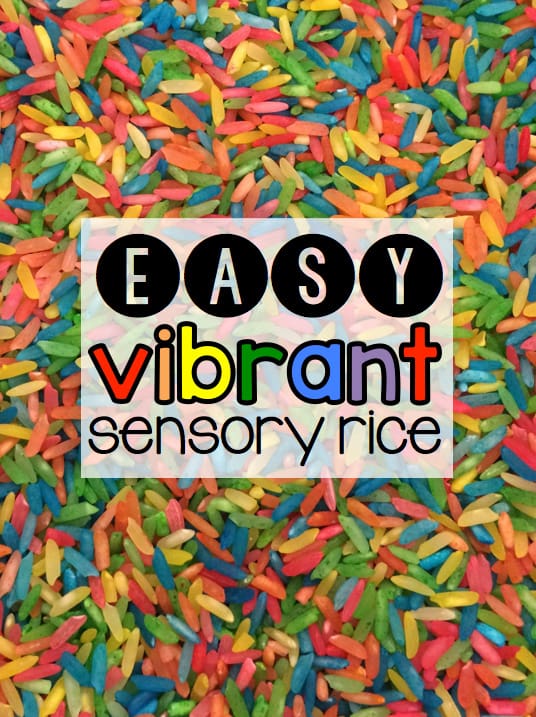
A Sensory Activity Recipe for Kids
Visual recipes are such a fun way to get kids involved in a lesson, Gabrielle Dixon and I created the Made For Me Literacy Edible and Sensory Visual Recipe Mega Bundle.
There are many benefits of sensory play for children, but encouraging motor skills is one of the best. There’s nothing quite as joyful for a child than digging through a bin of colored rice.
This is one of my favorite recipes for super easy, super bright dyed rice!
Step 1: Gather your materials
- 10 lb bag of rice
- isopropyl alcohol
- gallon Ziploc bags
- gel food coloring (if you want SUPER vibrant rice, you might want two boxes)
Step 2: Prepare
Divide the rice into gallon bags (one for each color you want to make).
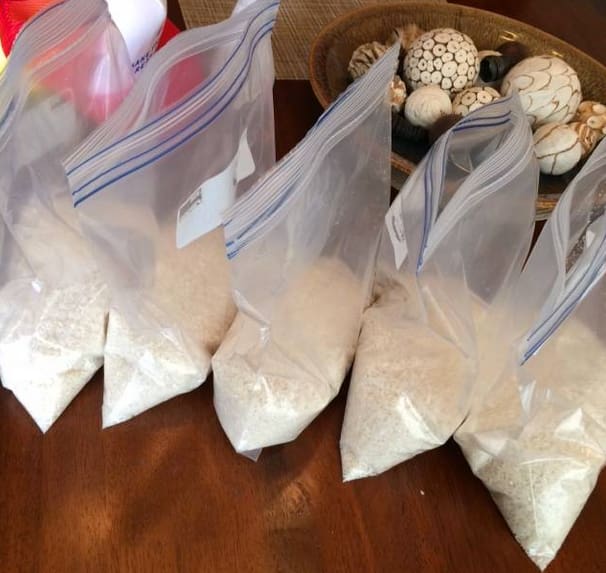
Step 3: Color
- Squirt desired amount of food coloring into each bag.
- Add about 1tbs of isopropyl alcohol to each bag.
- Zip the bag and start spreading the color around.
- Add more food coloring if desired.
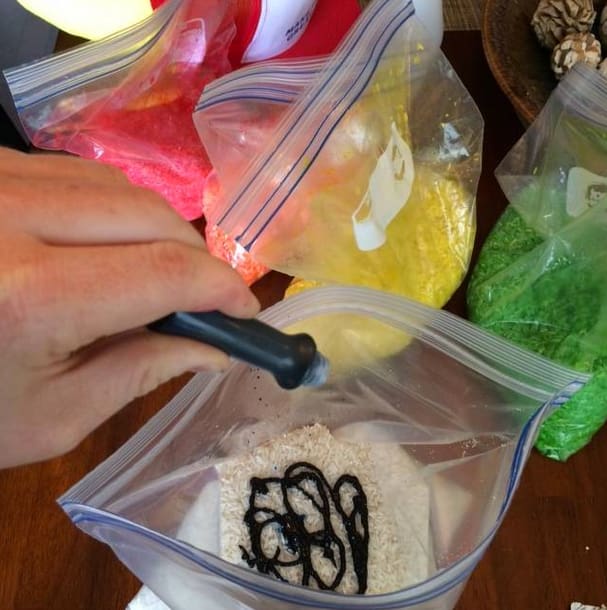
Step 4: Dry
- Line a cookie sheet with parchment paper.
- Carefully dump bags of colored rice onto the cookie sheet.
- Set outside and let dry. (I left mine overnight).
*(Please don’t) taste the rainbow!
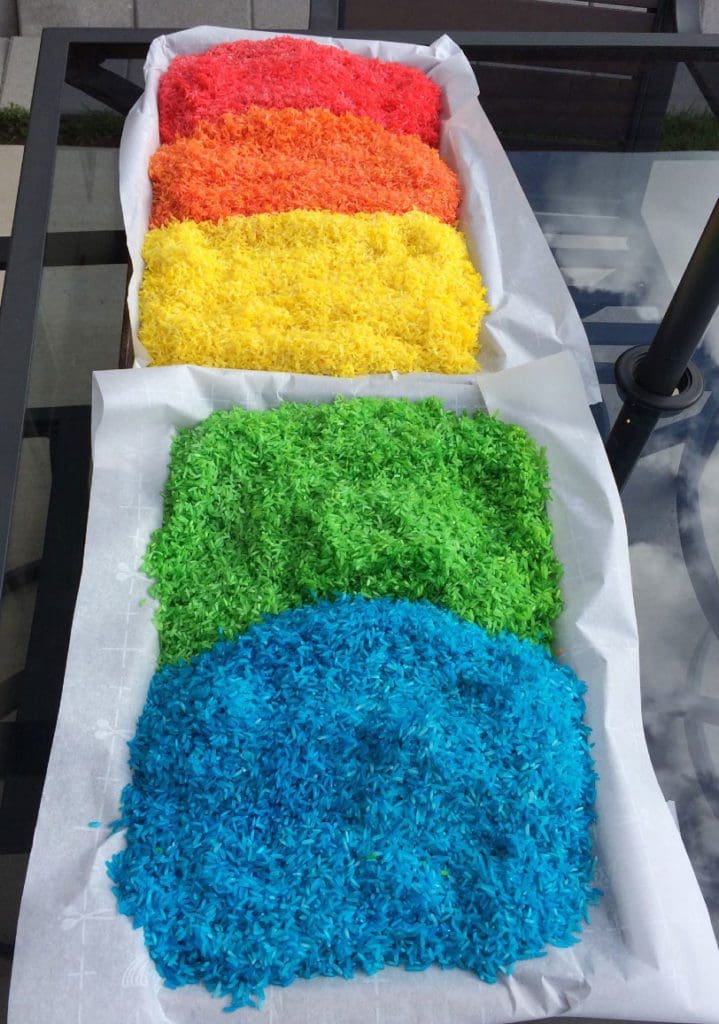
Step 5: Enjoy
Once the rice is dry, dump it into a big plastic container. And voila! The easiest, most beautiful sensory rice!
P.S. Do yourself a favor and buy a small broom and dustpan. You will need it.
Scroll to the bottom for links to “Made for Me” lesson Plans.
The Benefits of Sensory Rice Play for Development and Learning
Sensory rice play offers a multitude of benefits for children’s development and learning. Here are some key advantages:
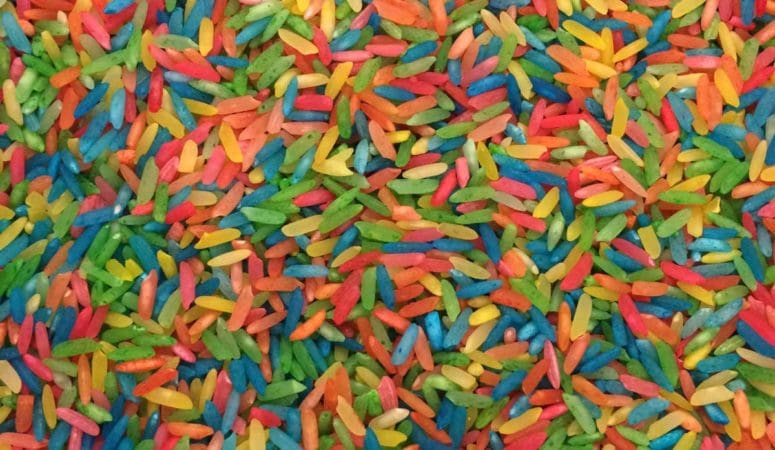
- Sensory Stimulation: Engaging with sensory rice provides valuable sensory input, stimulating the senses of touch, sight, and sound. This sensory stimulation enhances children’s overall sensory processing skills.
- Fine Motor Skills: Manipulating and exploring the rice grains helps strengthen fine motor skills, such as hand-eye coordination, finger dexterity, and precision. Pouring, scooping, and pinching rice grains are excellent activities for developing these skills.
- Creativity and Imagination: Sensory rice play encourages imaginative and open-ended play. Children can use the rice as a base for imaginative scenarios, pretend cooking, construction, and small-world play, fostering creativity and storytelling skills.
- Language Development: While engaging in sensory rice play, children naturally engage in conversations and express their thoughts and ideas. This enhances language development, vocabulary expansion, and communication skills as they describe their actions, textures, colors, and sensory experiences.
- Sensory Exploration: Sensory rice play offers an opportunity for children to explore different textures, colors, and materials. This exploration helps them develop their sensory preferences, learn about cause and effect, and understand the concepts of volume and measurement.
- Calming and Relaxing: The tactile experience of sensory rice can have a calming effect on children, providing a soothing and therapeutic sensory experience. It can help them relax, reduce stress or anxiety, and regulate their emotions.
- Cognitive Skills: Sensory rice play promotes cognitive development by encouraging problem-solving, decision-making, and critical thinking. Children can experiment with different tools, containers, and materials, observing and predicting outcomes and developing their cognitive abilities.
- Sensory Integration: Sensory rice play can be particularly beneficial for children with sensory processing difficulties or sensory integration disorders. It helps them regulate their sensory responses, improve sensory integration, and build tolerance to different textures and sensory inputs.
By incorporating sensory rice play into a child’s routine, parents and educators can support holistic development and provide a rich sensory learning experience.
Made For Me Literacy differentiated curriculum lesson plans weaves in hands-on activities like this visual recipe for a rainbow rice sensory bin in the Community Helpers unit. All visual recipes include a reflection sheet, and sequencing activity.
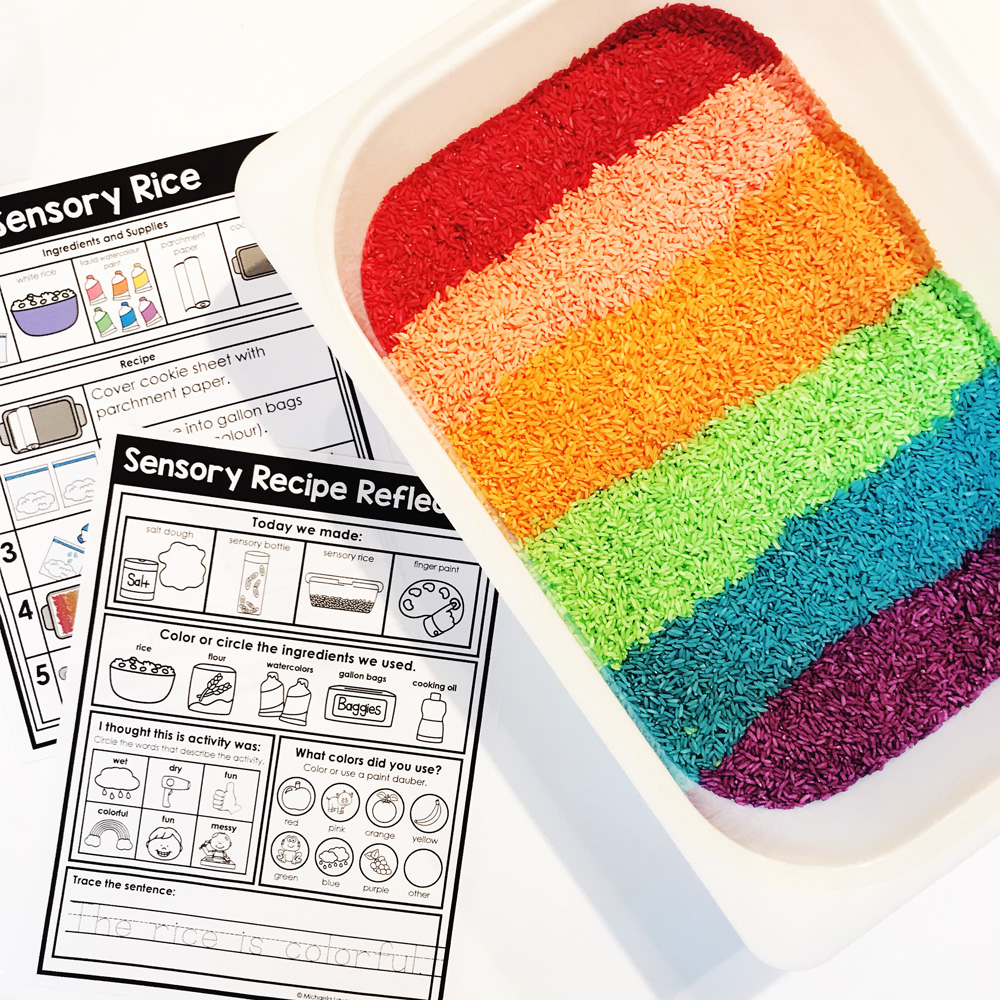
Made For Me Literacy monthly lesson plans have sensory projects and visual recipes for each of the included 4 weeks of curriculum.
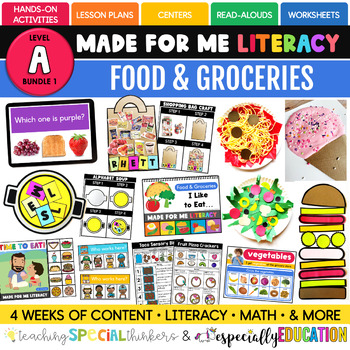
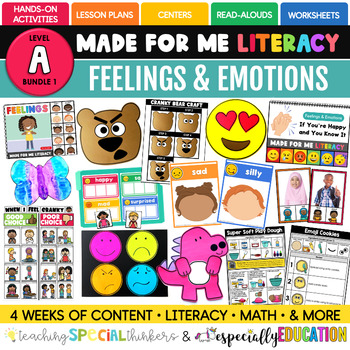
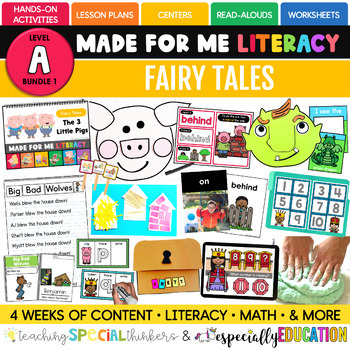
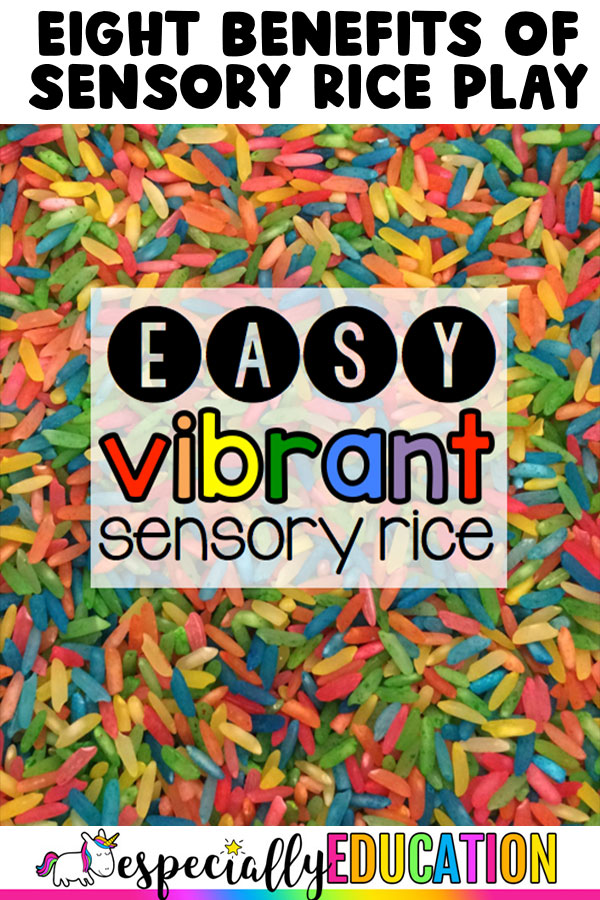
Sue says
Very cute! Do you put anything in it like letters or objects for them to find? I teach kinder.
Sue says
Thank you for your ideas! I’m looking forward to following you!
Michaela Davis says
Thank you for reading, Sue! Hopefully more DIY sensory projects will be happening soon! 😀
Michaela Davis says
I will definitely be going that this year! This will be my first year working with the younger kiddos (K-2) and I know they will LOVE that!
Deana says
I live this idea. I teach first grade. What all do you do with the sensory rice?